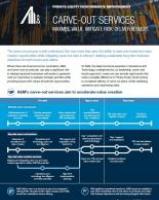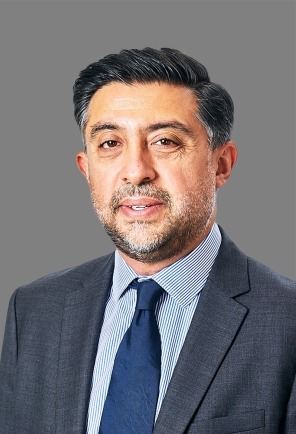Carve-out is Context - Transformation is the real opportunity
As mergers and acquisitions (M&A) pick up again after a pandemic-induced pause, buyers and sellers are clearly making up for lost time. The numbers of live transaction processes have surpassed expectations, and new deals continue to kick off at pace. The truth is that M&A is a vital tool for corporates and private equity (PE) owners to raise funds or offload unwanted assets. After a global market shock, PE investors are eager to take advantage of new value opportunities. We are already seeing an increase in transactions involving carve-outs of assets from large corporates where sellers are looking to crystallise value and improve liquidity. The key for buyers, however, is to turn potential into reality and deliver results.
Advisors will claim that value has been at the heart of the carve-out plan for decades. At Alvarez & Marsal (A&M), we see this slightly differently. Too often, carve-outs are conceived, planned and managed with risk mitigation in mind, rather than value creation. Too often, buyers focus on preserving value by maintaining stability and being careful not to disrupt operations.
While value preservation remains critically important, we believe the focus should quickly shift to identifying the key value creation opportunities and delivering value potential within an accelerated timeframe. This often means re-prioritising carve-out activities in a manner that focuses on pragmatic value creation without constraining the post-deal transformation plan.
We see assets carved out from corporate sellers as excellent opportunities for buyers and management teams to execute business transformations, from critical functional improvements to wholesale changes to the organisation’s structure and operating model. Therefore a key element of diligence is the need to quickly identify key enablers and dependencies in a transformation process, such as regulatory requirements, management expertise and corporate culture, to accelerate the carve-out and realise that change.
The technology pillar
Technology is an essential component of almost all carve-out transactions. In transformations, technology often dictates the critical path and delivery timeline as well as resource requirements and costs. It is the vector by which new operating model efficiencies translate into other aspects of the organisation, meaning value creation plans may not deliver returns at all unless technology is at the heart of the change. It’s clear that the importance of IT extends from the back office right through to customer-facing commercial operations.
A carve-out also presents an opportunity to reassess how the IT function itself is run. Applications can be retired or rationalised, contracts renegotiated, and strategic investments explored in conjunction with the carve-out, to prevent the need to ‘invest twice’.
Post-COVID carve-out trends
Recently we have seen corporate sellers push the boundaries of the transaction process by claiming improvement programmes are partially delivered or in-flight, intending to justify a buyer premium or inflated EBITDA. Justified or otherwise, competitive transaction processes place pressure on the winning bidder to deliver the plans presented by sellers, as well as finding additional upside potential over and above these plans. This approach holds up relatively well in a seller’s market, but there are already signs that corporates are keen to dispose of assets more quickly and present businesses to buyers with less execution risk. Carve-out trends in a post-COVID market already point to a softening of sellers’ lofty ambitions. While each transaction has its unique differences, there are three key questions stakeholders should consider in every M&A process:
- How much planned or partially delivered performance improvement can sellers realistically include in management forecasts whilst remaining credible?
- Can buyers and sellers continue to be as aggressive in the wake of COVID-19?
- With a more volatile economic climate, do buyers need to manage the carve-out agenda differently?
Sellers are taking a more cautious and less aggressive approach when presenting businesses for sale by focusing on executing quickly and shortening the time between signing and closing. For businesses aiming to raise capital, dispose of unwanted costs, and present positive news to the markets as quickly as possible, this makes a good deal of sense.
We are also seeing sellers invest less time, money and resource upfront in preparing for a transaction. As a result, carve-out plans and requirements are limited in detail, if they exist at all, until the buyer is identified and sellers have greater certainty of being able to close a deal. All this points to an increasing onus on the buyer to develop their own view on the carve-out complexity, costs and requirements during due diligence, even potentially taking a leadership role to develop the carve-out plan on behalf of the seller.
The transformational carve-out: what to prioritise?
Buyers remain eager to put capital to work by investing in good quality businesses with value creation opportunities. All the same, buyers and sellers need to think pragmatically to deliver strong results. Our approach in assessing and delivering successful carve-outs reflects these priorities, which are more vital than ever post-COVID-19, with a focus on:
- Ensuring there is one transformation plan that consolidates the different workstreams involved in pre-deal diligence (e.g. commercial growth, operational performance improvement, tax, cyber, human resource management and others);
- Assessing the IT environment as a key determinant of the transformation’s overall success and enabler of optimisation, as well as a potential source of value in its own right;
- Considering the carve-out plan and how it reflects (or should reflect) the transaction context, such as delivering on the seller’s priorities accounting for limited investment in upfront planning, or a buyer’s goal to deliver value creation in an accelerated timeframe.
A&M: Leadership. Action. Results
A&M has worked with private equity firms in Europe and globally to stabilise financial performance, transform operations, catapult growth and accelerate results through decisive action.
Our professionals have extensive experience supporting sellers and buyers through carve-outs and divestments, helping guide businesses through tough, complex situations. To learn more about our expertise and to understand the full scope of our Private Equity Performance Improvement work, contact a member of our team.



